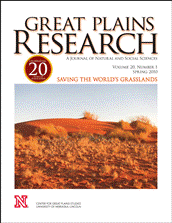Center for Great Plains Studies

Great Plains Research: A Journal of Natural and Social Sciences (through 2013)
Date of this Version
Spring 2001
Document Type
Article
Abstract
For over 100 years, bison in the Greater Yellowstone Area have been managed intensely. Even during the years of "natural regulation," bison herds have been heavily managed by culling. One of the fundamental goals of the plan for the Greater Yellowstone Area is to maintain the ecosystem's integrity using sound science. In order to reach this goal, it must be recognized that it is a dynamic system, continually undergoing change. However, our knowledge of such changes is extremely limited. In the case of bison, our knowledge is based on nonsystematically collected historic records and modern studies of small, isolated populations. In contrast, the prehistoric record can provide a millennia-long record, providing a baseline of pre-European conditions against which the modern situation can be assessed and future management decisions can be made. In this paper, I discuss the application of new and emerging techniques (e.g., stable isotope analysis, pollen and phytolith analysis, and DNA extraction) in the reconstruction of the biology and ecology of prehistoric bison and in contemporary management of bison.


Comments
Published in Great Plains Research 11:1 (Spring 2001). Copyright © 2001 Center for Great Plains Studies.